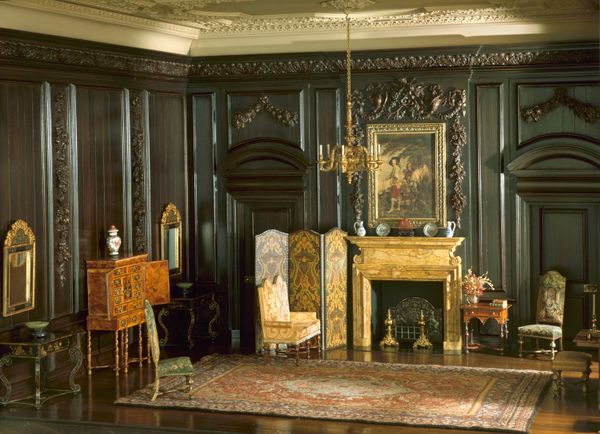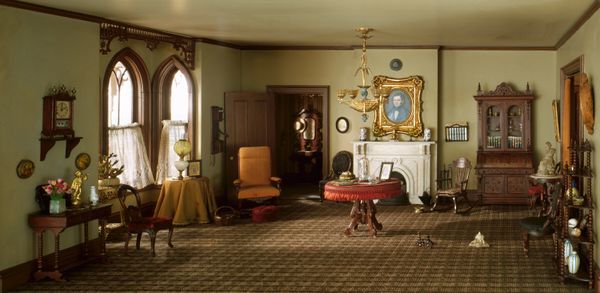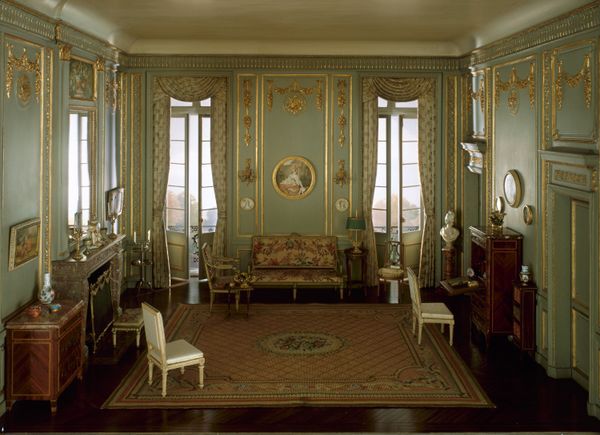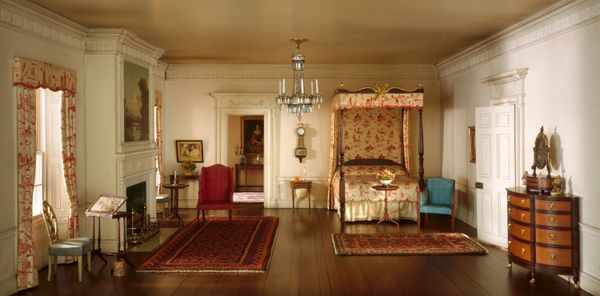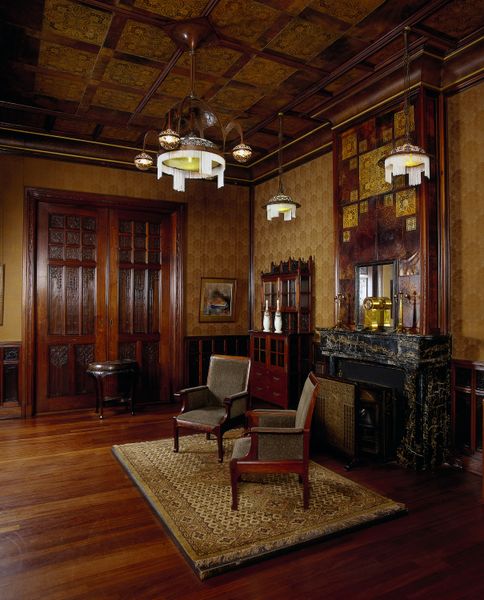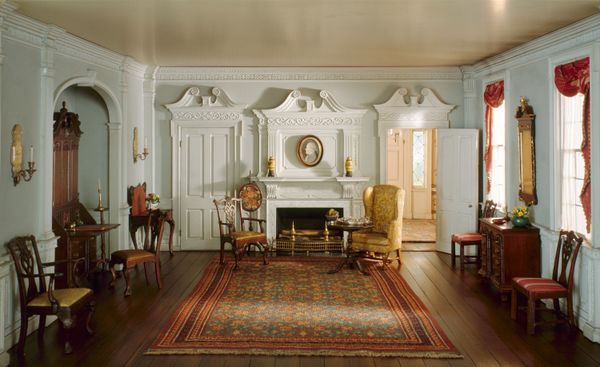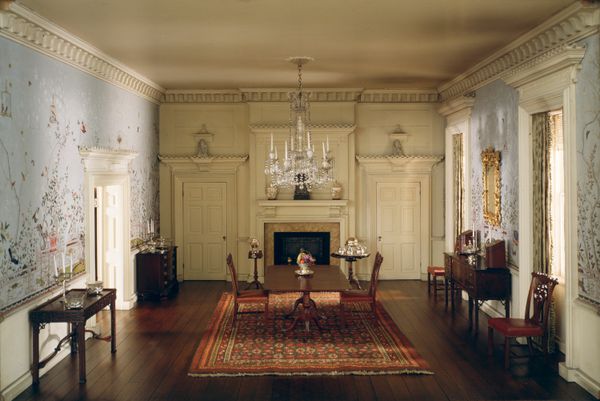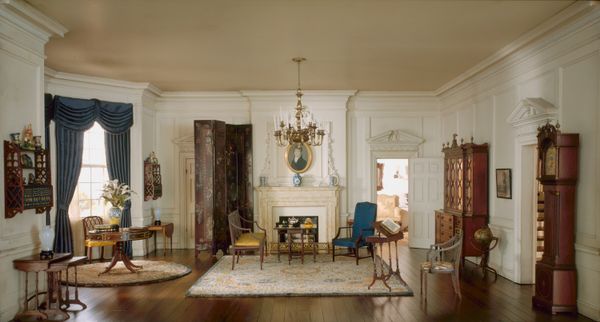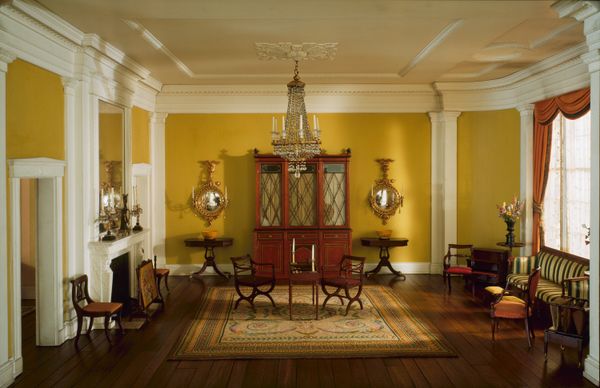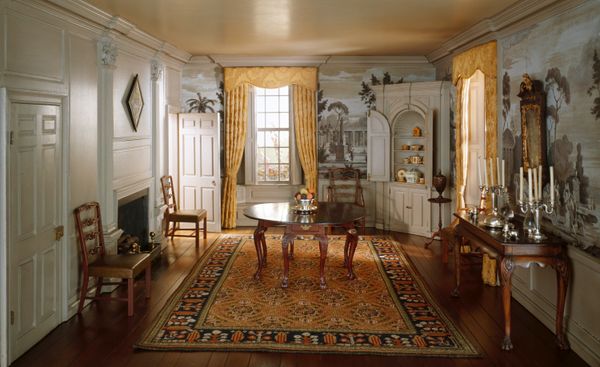
E-19: French Dining Room of the Louis XIV Period, 1660-1700 c. 1937
0:00
0:00
photography, architecture
#
interior architecture
#
medieval
#
show home
#
traditional architecture
#
photography
#
wooden interior design
#
veil as a decoration
#
showhome propping
#
decorative-art
#
architecture
Dimensions: Interior: 17 × 26 1/2 × 21 5/8 in. Scale: 1 inch = 1 foot
Copyright: Public Domain
Editor: This is *E-19: French Dining Room of the Louis XIV Period, 1660-1700,* a photograph taken around 1937 by Narcissa Niblack Thorne. Looking at the miniature dining room, the dark wood paneling and the formal arrangement of furniture evoke a feeling of rigid, almost performative, luxury. How do you interpret this work, seeing as it's a photograph of a miniature recreation of a historical scene? Curator: That "performative luxury" you mentioned is a great starting point. Thorne's miniature rooms, meticulously crafted, offer a window into a romanticized past, specifically, a past built on power structures of the time. Consider how the dining room, historically, has been a site of social display and negotiation for specific individuals only. Can we see how it enforces certain roles within a specific class? Who is invited to the table, and who isn't? What social contracts were built within such interior spaces? Editor: That makes me think about access, and who gets to experience this kind of luxury. Were these miniature rooms meant to educate or inspire others outside these spaces? Curator: It's interesting to consider what that "inspiration" entails. Is it admiration, or perhaps, even a subtle reinforcement of an exclusive ideal? Remember, these historical interiors were shaped by colonialism, slavery, and intense wealth inequality. Are these just period rooms or relics of violent systems? How do you reckon we think about that violence and wealth in a museum setting? Editor: It definitely adds a layer of complexity knowing about the historical context behind the room's design. It's more than just aesthetically pleasing; it is about how such designs supported power dynamics of the era, or whose legacy gets presented as worth archiving or idealizing. Curator: Exactly. Thorne's work allows us to explore that tension, between aesthetic appreciation and critical awareness of the power dynamics that underpin such spaces and collections. Editor: Thanks, I’ll keep that in mind while thinking about this room going forward.
Comments
No comments
Be the first to comment and join the conversation on the ultimate creative platform.

